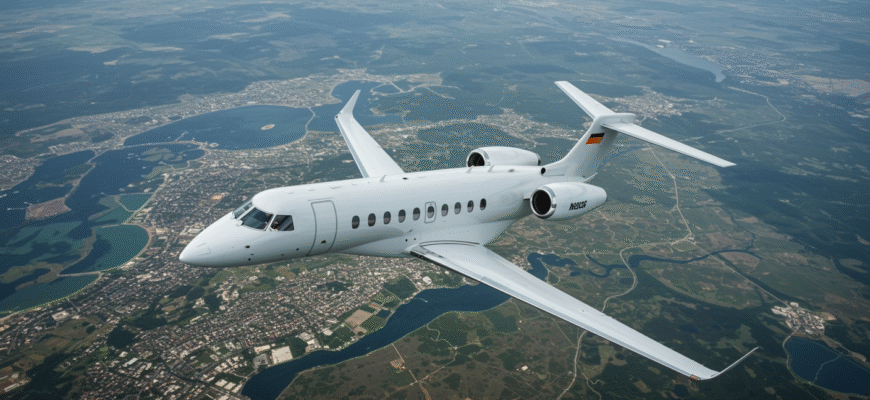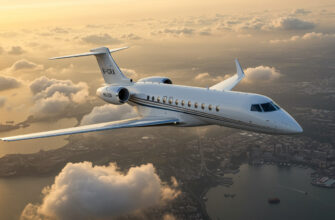There’s something odd happening in Germany’s private jet scene—on paper, demand looks hotter than ever. But dig into the numbers, and the story isn’t all smooth air and champagne. Everyone’s Googling “private jet Germany,” yet plane takeoffs have actually dropped. It’s a strange disconnect. Business aviation movements have fallen nearly 7% year-over-year by mid-the current year, even though high-end operators are reporting more clients asking for newer, quieter, and more luxurious jets. Airports like Frankfurt and Munich are still busy with corporate flyers, but the growth has started to stall. So what’s pulling people in without pushing the planes out?
Flight Counts Shrink While Expectations Soar
Corporate travel isn’t dead—it’s just dressed differently. Legacy routes from Hannover and Frankfurt are still active, especially Monday to Thursday. But the big spike is happening in the details: shorter bookings, newer planes, more tech inside the jets, and fewer empty seat minutes. Operators like Hahn Air are betting big on the Citation CJ3 Gen2 to replace aging fleets, answering executive calls for faster, newer, smaller aircraft that feel more like rolling offices in the sky.
Think leather seats, AI-assisted pilots, and mood lighting that feels more yacht deck than flight deck. The demand is personal, not just professional. And passengers aren’t necessarily flying farther—they’re just expecting better.
The Faces Behind All That FreNet Search Activity
Private jet bookings are no longer the territory of old-money hedge funders and C-suite lifers only. There’s a clear pivot in who’s boarding:
- Executives in finance, law, and biotech from Berlin and Düsseldorf—not just flying to New York but zipping between Hamburg and Stuttgart in hours
- Movie stars, fashion influencers, and luxury buyers flooding Sylt or Tegernsee when events and galas show up on calendar feeds
- Trend-conscious Gen Z wealth — known for chartering CJ3 Gen2s not for meetings, but for Instagram
In the current year, there’s a noticeable shift from function to flex. The Citation XL remains a bestseller, but it’s the CJ-series jets that are grabbing attention among image-driven flyers looking for speed and aesthetic without the bulk of heavy jets.
Why Germany’s Business Flyers Still Choose Wings Over Wheels
It doesn’t take long to get from Berlin to Düsseldorf by train. And yet, over 50% of all private jet flights within Europe stay within Germany. That’s over 300 airports available for private use. It’s not inefficiency—it’s strategic autonomy.
Jet setters aren’t just avoiding delays at Frankfurt’s security lanes. They’re optimizing their hours. A meeting in Leipzig followed by dinners in Munich or a family weekend in Sylt? That’s all in a single day with a chartered plane. The convenience outweighs the cost when flexibility is king.
| Top Domestic Private Jet Routes in Germany (the current year) | Estimated Weekly Flights |
|---|---|
| Munich to Berlin | 115 |
| Frankfurt to Sylt | 92 |
| Düsseldorf to Hamburg | 78 |
| Stuttgart to Leipzig | 51 |
Germany’s role in business aviation isn’t about continental crossings—it’s about compressing time with intensive intra-country flights. The value isn’t only in the distance covered, but the decisions made between takeoff and landing.
Small Airports, Big Secrets
While Frankfurt and Munich dominate international headlines, let’s talk about Sylt and Kassel. Sylt Island’s private terminal is basically a weekend delivery system for Gulfstreams packed with entertainment elites. Ticket to Cannes? Many catch a detour through Sylt first—because services are discreet, agents are already there, and local perks cater to high-end flyers.
Operators are increasingly working out of less congested airports like Leipzig, Paderborn, and Kassel, where fuel is cheaper, hangars aren’t full, and there’s more flexibility for sudden changes. These quieter runways aren’t just cost-efficient—they’re tailored for high privacy missions and VIP drop-offs.
Here’s why they matter:
- Low traffic means smoother arrivals and fewer delays
- Fuel and maintenance costs are reduced, making the flight more flexibly priced
- “Ghost flights”—unseen repositioning trips—use these hubs to recalibrate the network
- Private clients prefer off-the-map settings for discretion or security
The bigger story? Germany’s elite travel habits aren’t just about speed or money. It’s about showing up quietly, on time, and under the radar—something these modest hubs are built for.
The New Jet Fetish: Aircraft Trends and Owner Psychology
Why are Germany’s top execs drooling over jets like the CJ3 Gen2, Phenom 300E, and Challenger 650? It’s not just about speed or privacy anymore—it’s about identity, productivity, and, yes, a little flexing.
Walk into the cabin of a brand-new CJ3 Gen2, and it hits you fast: less noise, more tech. Light that reacts to your circadian rhythm, touchscreen cabin controls, and Wi-Fi that actually works at altitude. Think of it as a flying co-working space spliced with a luxury retreat. These jets aren’t just for getting from Frankfurt to Munich—they’re optimized for working mid-air without losing your flow.
But not every purchase is about function. For more and more wealthy Germans, a jet is the new Birkin. Social feeds are filled with CEOs stepping off private jets in Sylt, influencers posting runway-side in Berlin, and shot-after-shot of bespoke interiors and champagne lounges. Luxury like this isn’t quiet—it broadcasts.
Still, full ownership isn’t trending upward. Shared stakes are taking off. In Munich and Hamburg, interest in fractional ownership has jumped—spurred by operators like NetJets, JetClub, and a few crypto-laced startups offering glossy, buy-in-light packages. It’s like time-sharing, reborn with jet fuel and a QR code.
Green Skies Ahead—or Just Greenwashing?
Germany wants net-zero, but its private jet passengers are still burning fuel faster than most countries drive. Climate guilt is real—but convenience often wins. Toss in a growing wave of “flight-shame” headlines, and the current year turned up the pressure on private flyers to look cleaner, if not be cleaner.
SAF (sustainable aviation fuel) is everywhere in the sales pitches. Lufthansa Private Jet boasts test flights using SAF blends, while boutique fuel suppliers feed hopes of a “greener jet decade.” But behind the press releases, the real numbers are murky. How much SAF actually powers these jets? And is adding 10% SAF enough to count?
Some operators are offering creative emissions solutions—“plant a tree for each flight” marketing ploys that sound soothing. Others are locked into closed-loop carbon capture promises, claiming real reduction, not just feel-good tagging. But even those programs are under scrutiny for how seriously they track and neutralize carbon burned mid-flight.
So while recycled leather seats and paperless cabins make headlines, the real test is transparency. Until private flyers demand receipts for what’s actually clean, the skies may stay more PR-friendly than planet-friendly.
What Might Change by 2026
Germany’s private jet scene is facing turbulence, and not the kind that makes your champagne spill. Regulators are circling—literally. Proposed EU-wide luxury flight taxes are back on the agenda. Add noise complaints and local councils wanting curfews around small hubs, and every operator with a busy landing strip near Frankfurt or Sylt is paying attention.
But it’s not all storm clouds. Tech is moving quicker than policy. EVTOLs (electric vertical takeoff and landing aircraft) are being tested near Stuttgart and in Bavaria. One successful trial could flip short-hop market dynamics fast—think Berlin to Leipzig in 20 quiet minutes.
Behind the hangars, AI is already in play. Smart fleet scheduling is trimming idle time and letting operators squeeze more flights into tighter windows. It’s about efficiency, but it also helps ease emissions criticism.
The biggest pressure? Clients. They want fast, sleek, and tap-to-book. Apps offering jet seats per hop—essentially turning luxe flights into elite Ubers—are gaining ground. As tech bros and crypto whales turn runway moments into Insta stories, the old rules of exclusivity are being rewritten. It’s still elite, just more crowded at the top.









